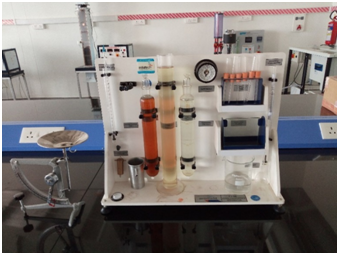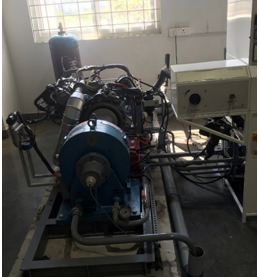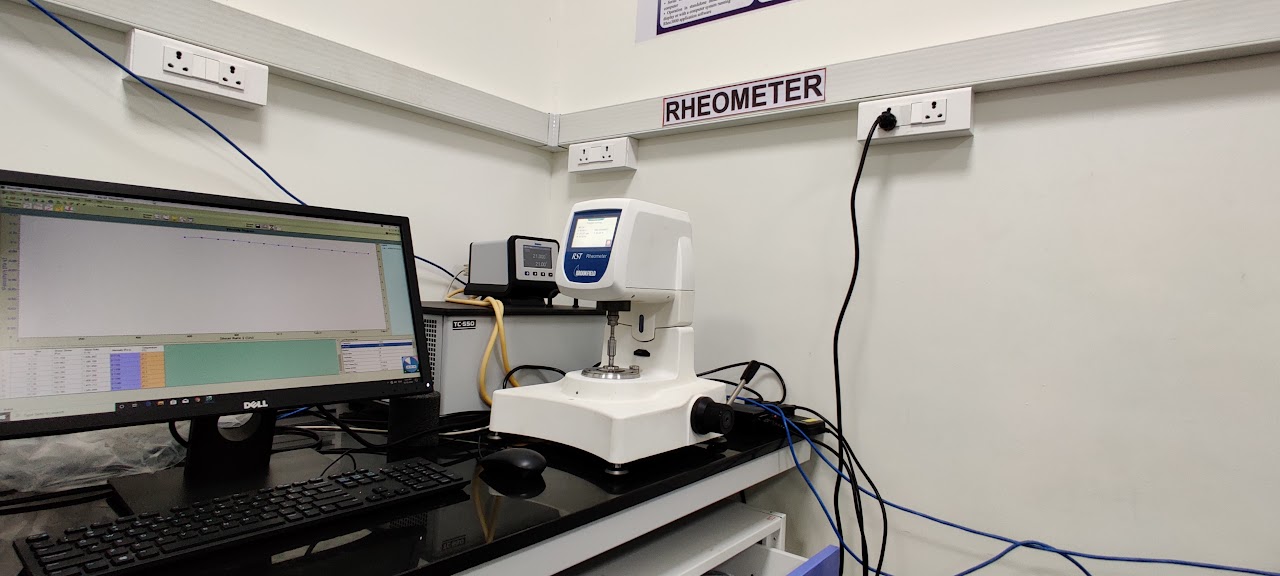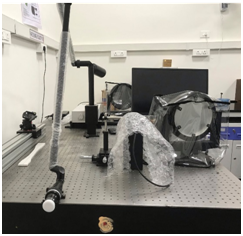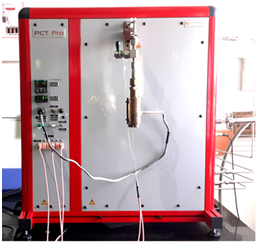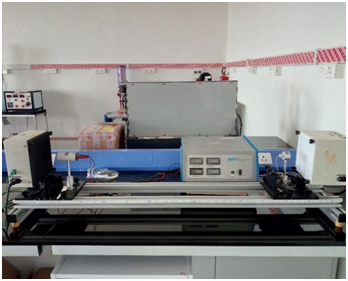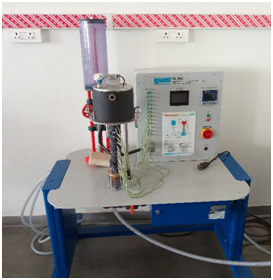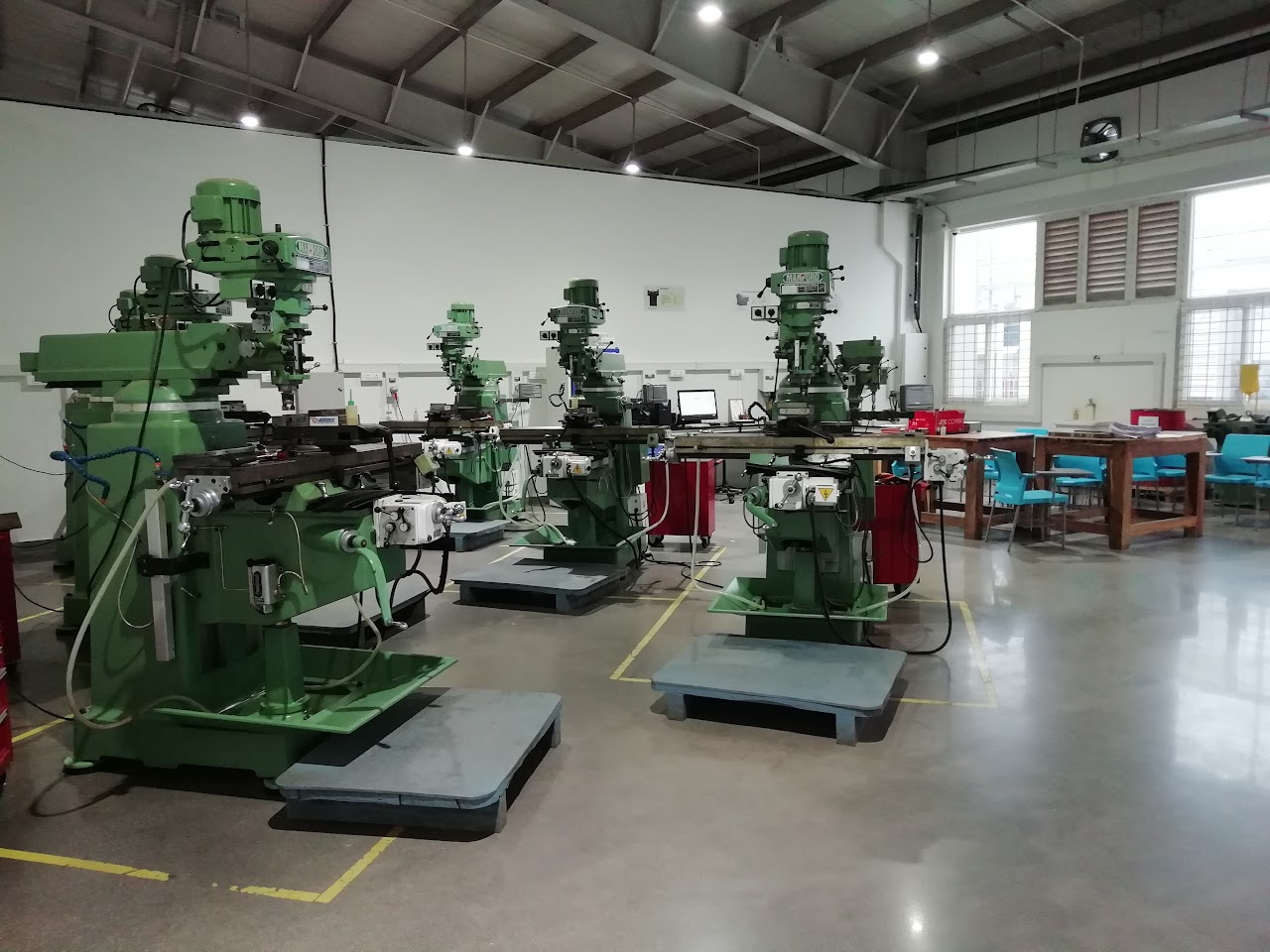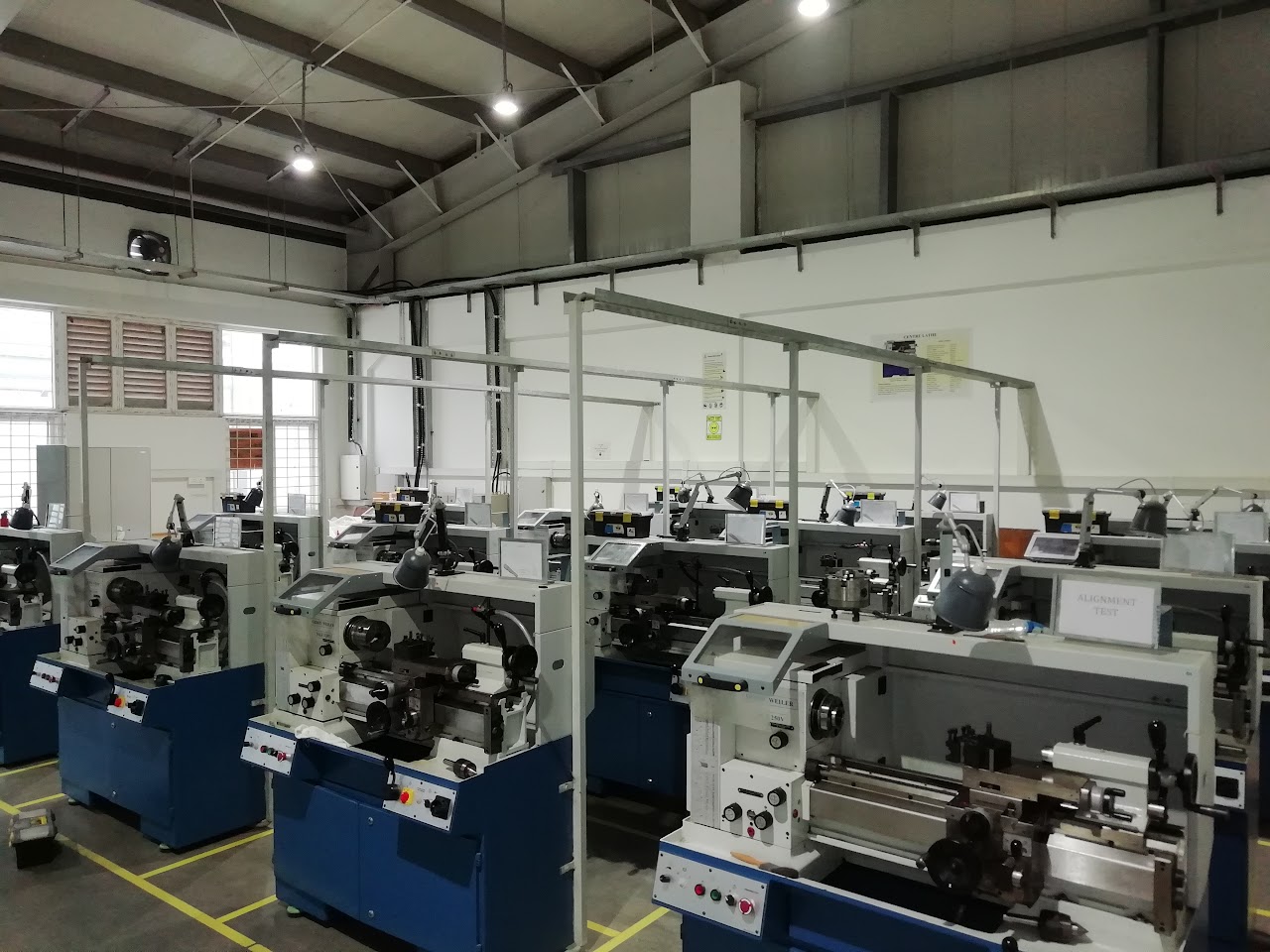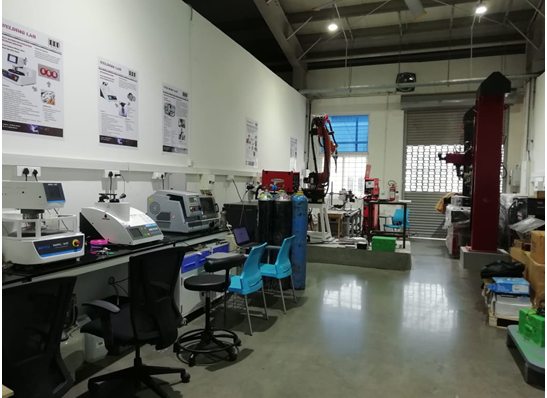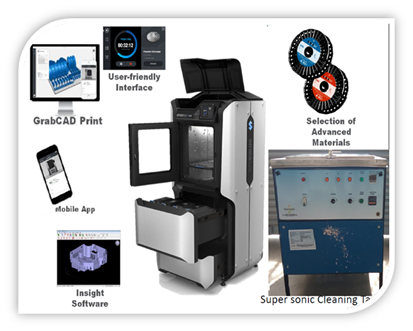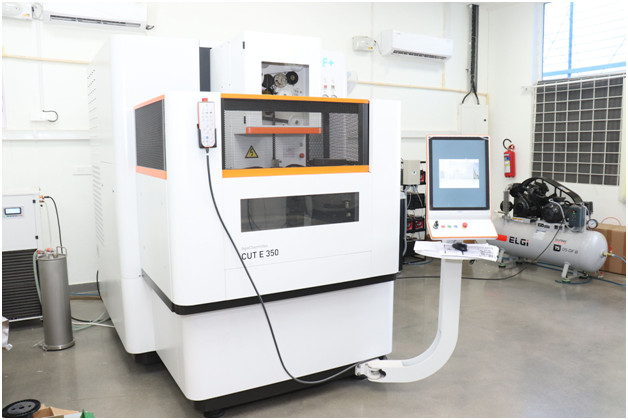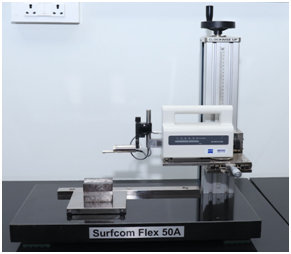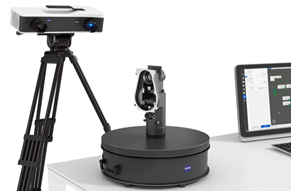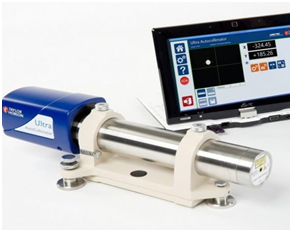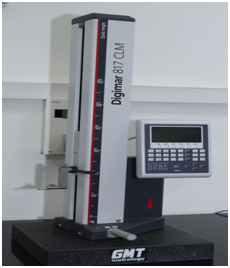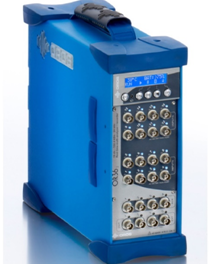Advanced Materials Manufacturing and Tribology Lab (AMMT)
-
High Throughput Methods in Materials Discovery and Development
-
Materials Data Sciences and Informatics
To know more information about Advanced Materials Manufacturing and Tribology Laboratory (AMMT) - Click here
EXPERIMENTAL TECHNIQUES
- Friction Stir Welding/Processing/Additive
- Stir Casting, Squeeze Casting, Pressure Infiltration
- Ball Milling
- Micro and Nano Indentation
- Mechanical Testing
- Twin Roll Vacuum Arc Melting
- X-Ray Diffraction (XRD)
- Microscopy
- Micro Soldering
- Wire Arc Additive Manufacturing
- Universal Tribometer
The Applied mechanics laboratory has been set up for the students to perform experiments related to basic principles of solid mechanics and fluid mechanics. A portion of applied mechanics lab consists of fluid mechanics laboratory equipment that were delivered and commissioned at IIT Tirupati Temporary Campus in July-August 2017. Students belonging to Mechanical Engineering, Chemical Engineering, and Civil Engineering Departments conduct their experiments using these equipment, which include Reynold’s apparatus, Bernoulli’s principle verification setup, apparatus for investigating the impact of jets on flat and curved surfaces, apparatus for calculating frictional head losses in pipes, apparatus for estimation of flow rates in pipes using venturimeter/orifice meter, apparatus for estimating meta-centric height of floating bodies, setup for flow visualisation using streamlines.
Solid mechanics experiments include tensile testing using universal testing machine, hardness testing machine, torsion measurement, stresses in thick and thin cylinders, strain measurement using strain gauges, bending of beams, photo elasticity measurements and impact testing.
The fluid mechanics Laboratory is designed to fortify student’s theoretical knowledge which they learned during classroom lectures. The laboratory consists of following experimental setups
-
Reynolds experiment setup to visualize laminar and turbulent flows
-
Different flow measuring set-ups such as venturimeter, orifice-plate, rotameter.
-
Free and forced vortex experimental setup
-
Impact of jet on surfaces to verify momentum conservation
-
Experimental setup to verify Bernoulli’s theorem
-
Experimental setup to study losses in different pipe segments
-
Fluid property measurement equipment to measure density, viscosity, surface tension
-
Water flow bench to visualize flow around different shapes
-
Experimental setup to study stability of floating bodies
Applied thermal engineering laboratory has been setup to provide hands-on experience to students on thermal engineering concepts such as internal combustion engines, refrigeration and air conditioning, fuel property measurements. The laboratory consists of following experimental setups:
-
Two-cylinder CRDi Diesel Engine Setup
-
Single Cylinder Petrol Engine Setup with Open ECU
-
Bomb Calorimeter
-
Vapour Compression Refrigeration Sytem
-
Air Conditioning Trainer Setup
-
Dunuoy Ring Tensiometer
-
Rheometer
Two-cylinder CRDi Diesel Engine Setup
The two cylinder, CRDi engine experimental setup is used to study the performance of the diesel engine at various load and speed conditions. This experimental setup consist of an engine, dynamometer, fuel and air flow measuring equipment and exhaust gas analyser. In this setup, in cylinder pressure of one of the cylinder can be acquired using a cylinder pressure sensor and the data can be used to study combustion characteristics of the engine.
Bomb Calorimeter
Bomb calorimeter is used to determine the calorific value of solid and liquid combustibles including oil, coal, coke, foodstuffs, and biomass products. The calorific value is a crucial characteristic for each substance, also the key point to calculate the energy input to the any system using it. This technique is widely applied in power plants, coal mines, metallurgy, chemical industry, commercial inspection, scientific research.
Rheometer
A rheometer is a laboratory device used to measure the way in which a liquid, suspension or slurry flows in response to applied forces. The rheometer available in the department is DV3T model of Brookfield and is capable of controlling the temperature and shear rate independently. It has built-In options include math modeling, yield tests, timed tests, data averaging, programmable QC limits/alarms, customizable speed/spindle lists, on screen data comparison. This instrument can also analyze characteristics such as yield stress, flow curves, leveling and recovery.
Particle Image velocimetry (PIV) setup
Particle Image Velocimetry (PIV) is a non-intrusive laser optical measurement technique for research and diagnostics into flow, turbulence, microfluidics, spray atomization and combustion processes. Particle Image Velocimetry setup is primary used for planar velocity field measurements in a flow. The consists of dual pulsed Nd:YAG laser, particle seeder and a double shutter CCD camera to take time frozen images of flow field and analyse it for the velocity field.
Gas Sorption Analyser
PCT Pro is an automated Sievert type gas sorption analyzer. It is used to measure gas sorption characteristics of materials. It is equipped with multiple dosing volumes combined with PID pressure and PID temperature control systems. The PCT Pro is well suited for both gas-solid and gas-liquid sorption.
The heat transfer laboratory is also a part of the applied thermal engineering lab. It has various experimental setups to enhance students' understanding on concepts of heat transfer. This laboratory consists of following experimental setups
-
Thermal conductivity measurement of solids and fluids
-
Linear and radial heat conduction setups
-
Free and forced convection over different objects
-
Pool boiling and condensation experimental setup
-
Heat exchanger setup with tube in tube, shell and tube, plant and fin and jacketed vessel types
-
Different temperature measurement instruments and their calibration
-
Thermal conductivity measurements of insulating materials
-
Experimental setup to verify Kirchhoff’s law and Stephen-Boltzmann Law
-
Manual Injection Moulding Machine
-
Air Compressor
-
Air Dyer
-
Pneumatic Training Kit
-
Electro- Pneumatic Training Kit
-
Hydraulic Training Kit
-
Electro- Pneumatic Training Kit
-
Hydraulic Training Kit
-
Welding Simulator
-
Switch Module
-
Lamp Module
-
Tube Light Module
-
MCB & ELCB Module
-
Conductor Module
-
OLR Module
-
Push button Module
-
Timer Module
-
MCB Module
-
ESAB- 400 Amps Arc Welding Transformer
JAM lab is developed to train the undergraduate and postgraduate students on the latest joining processes and metallographic studies. Active research is performed in the JAM lab where five PhD and four M. Tech students are pursuing their research work. The JAM lab consists of the following pieces of equipment.
Machine tools laboratory has been set up for the students to perform experiments related to advanced machining process. This lab has advanced machines like CNC Lathe, CNC Milling, CNC Wire cut EDM, and 3D Printer. We have set up this lab in such a way that the students are able to give CNC Program through Master Cam, AutoCAD software.
The machine tools laboratory is designed to strengthen student’s theoretical knowledge which they learned in manufacturing courses. The laboratory consists of following experimental setups.
3D PRINTER
-
Streamlined workflow – Go directly from CAD file formats to 3D print with GrabCAD Print software
-
Minimal setup – simply plug and print.
-
Reliable results – High levels of accuracy and repeatability, with engineering grade materials
CNC WIRE CUT EDM
-
Cutting of all electrically conductive materials
-
The removal of metal from the work piece is obtained by means of energy released by repetitive spark discharge
-
Uses thin brass or zinc coated copper wire as electrode
-
Makes possible cutting most shapes and contours from flat plate materials, complex shapes, desired profile, micro holes for nozzles, through cutting of holes, narrow slots, dies.
-
Machine cutting range: X= 350 mm , Y= 250mm, Z= 250 mm.
-
Work volume: 820x680x245mm.
-
Maximum work piece weight: 400 kg.
CNC MILLING
-
Perfect 3D Control Technology.
-
19 inch DMG MORI slim line multi-touch control panel and Siemens.
-
Compact design with large working area for machining customized parts.
-
Longitudinal travel : 600 mm
-
Cross travel : 540 mm
-
Vertical travel : 500 mm
-
Clamping area : 900x500 mm
-
Maximum work piece weight : 500 kg
-
Spindle speed : 20-12000 rpm
-
Accuracy :10 microns
CNC LATHE
-
Computer numerical controls(CNC).
-
Wide variety of process capability.
-
Indexing and contouring head.
-
Online and offline programming available.
-
Equipped with one turret(12 tools).
-
Performed several operations on different surfaces of the work piece.
-
Maximum Turning diameter : 610 mm
-
Check diameter : 320 mm
-
Travel in Z- axis : 580 mm
-
Swing over bed diameter : 610 mm
-
Max.Work piece length with a tail stock : 580 mm
-
Accuracy :10 microns
Metrology Lab has been set up for the students to perform various measurement related experiments. We had versatility in the equipment unlike any other metrology lab, we had basic measurement tools (e.g Vernier, micrometer etc) to the advanced equipment (e.g 3D scanner, CMM) to meet the present day Industry requirements. Also we had equipment like Autocollimator, height gauge, surface roughness tester. This lab also houses the following metrology hand tools: GO & NOGO ring, plug and feeler gauges, sine bar, dial gauge setup with magnetic base and thread plug gauge.
The Metrology Laboratory is designed to strengthen student’s theoretical knowledge which they learned in Metrology course. The laboratory consists of following experimental setups.
Coordinate Measuring Machine (CMM)
Coordinate Measuring Machine (CMM) is an extremely powerful metrological instrument that has a resolution of 0.1 microns. It is a 3-Dimensional device for measuring the physical geometrical characteristics of an object. This machine may be manually controlled by an operator or may be operated by a computer – a specialized form of an industrial robot. Measurements are defined by a probe attached to the third moving axis of this machine. This probe touches the part of interest and allows collecting discrete points on the object's surface. It has a measuring range : X= 700 mm,Y= 700 mm and Z= 600mm,Accuracy:1.8 µm.
3D Scanner Setup
3D Scanner is used to digitize the virtual data from the given physical object. The scanned model would be compared with the standard CAD model. It is one of the most popular equipment in Reverse Engineering applications. It can achieve optimal measurement results quickly as it is designed for mobile and flexible use. It can scan any non- reflective material complex component and gives as CAD model ( e.g. {.igs, .stl}).
Autocollimator setup
Autocollimator has been used for checking the flatness of any machined surfaces.It also measures the straightness and checks the parallelism between any two flat surfaces. It is a Non –contact type instrument that can be employed for checking straightness of machine tool slideways. It is a very versatile instrument, as it can also be used for checking flatness of bed plates and surface tables, checking parallelism of twin slide rails and for measuring very small angles.
Surface Roughness tester
Surface roughness tester is being used to measure the surface roughness and waviness of the machined surfaces and it also gives the parameters like Ra, Rz, Rq etc. It has a measuring range of 50 mm, and can apply a maximum force of 0.75 m N during measurement. It employs ‘Stylus’made of diamond with a radius of 2 µm to measure surface roughness. It can make measurements at a speed of 0.15 mm/sec to 1.5 mm/sec.
Digital Height Gauge
It is a digital device used for determining the height of objects and for marking of items to be worked on. It boasts of a resolution of 1 micron. It houses a 3- point air cushion at bottom and has a measuring heightrange of 600 mm.
The mechanical mibration lab provides hands-on experience with instrumentation used for vibration monitoring and modal analysis. The lab is equipped with a mass-spring-damper system to study the effect of structural stiffness and damping on mechanical vibrations. During the laboratory exercises, students utilize this setup to understand the free and forced vibrations and the effect of damping on vibration suppression under resonant conditions.
The lab also houses a versatile data acquisition system OR38. With its embedded computation and storage, OR38 is ideally suited for on-line in vehicle NVH measurements with parallel recording. OR38 fulfills the requirements of on-site rotor dynamics and machinery diagnostic for both predictive maintenance and acceptance tests. With its large computation capability and inputs number OR38 matches perfectly sound localization applications, such as holography, beamforming.
OR38 benefits from the latest Teamwork technology to boost measurement efficiency, security and quality. Natively embedded in each critical hardware and middleware location, this provides a complete environment dedicated to high-efficiency vibration tests. Ideal for industry and academia, it enables the instruments to be cascaded in stacked or distributed configurations, and facilitates sharing of conditioners and accessories. The powerful embedded local DSPs process signals on-line, without missing a sample for any rate or result type.
Salient Features of this Data Acquisition System:
-
Rugged 4 to 16 channels chassis
-
Portable: 5.2 kg (11.4 lbs)
-
4, 8, 12 or 16 universal inputs
Mechanical vibration lab is equipped with accelerometers, force sensors, free field microphones, calibration shaker for accelerometers, dynamic shaker, pistonphone calibrator, modal impact hammer, etc. to provide a complete coverage of instrumentation used in vibration monitoring, control, and isolation. Students use this laboratory to acquire the practical experience with instrumentation related to mechanical vibrations.
List of Laboratory Equipment:
Accelerometers: Accelerometers measure the levels of vibration in an engine or system. They detect faults and prevent potential damage. Presently we have 9 accelerometers out of which three are uniaxial and rest six are triaxial accelerometers.
Force Sensors: Quartz, piezoelectric force and strain sensors are durable measurement devices which possess exceptional characteristics for the measurement of high frequency dynamic force and strain events. Typical measurements include dynamic and quasi-static forces as encountered during actuation, compression, impact, impulse, reaction, and tension. Presently we have 3 triaxial force sensors
Free Field Microphone: A microphone is an acoustic to electric transducer or sensor that detects sound signals and converts them into an electrical signal. Presently we have 2 microphones.
Calibration Shaker for Accelerometer: Handheld Shaker is a small, self-contained, battery powered vibration exciter specifically designed to verify accelerometer and vibration system performance. It accepts sensors weighing up to 210 grams and delivers a controlled 1 g mechanical excitation.
Dynamic Shaker: Vibration testing is done to introduce a forcing function into a structure, usually with the use of a vibration test shaker or vibration testing machine. These induced vibrations, vibration tests, or shaker tests are used in the laboratory or production floor for a variety of things, including qualifying products during design, meeting standards, regulatory qualifications, fatigue testing, screening products, and evaluating performance. Presently we have 2 capacities i.e 100N and 400N dynamic shaker with amplifier.
Pistonphone Calibrator provides quick and accurate calibration of sound measuring equipment including sound level meters.
Modal Impact Hammer: An accelerometer (or laser velocity transducer) is used to measure the response of the structure. Contrary to using an electrodynamic exciter, an impact hammer does not apply additional mass loading to the test object and it provides a very portable solution for excitation. This is used in scenarios like impact-force measurements on small to medium structures, measurement of frequency response functions using impact excitation techniques and for modal analysis of dynamic structural testing system and the prediction of structural response.


